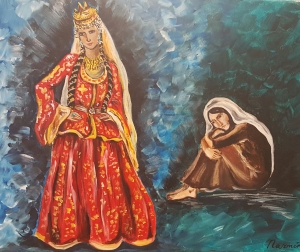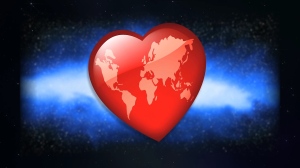 HEARTS RIPE FOR HARVEST: THE ROMANCE OF THE ROAD
HEARTS RIPE FOR HARVEST: THE ROMANCE OF THE ROAD
The Silk Road
Back in 1877, a German traveler and geographer officially coined the term “The Silk Road” for the series of trade routes connecting China with the West. He used “Silk Routes” interchangeably in his work, but “The Silk Road” prevailed in literature and maps over the ensuing centuries. Today, with our fanaticism for accuracy and fact-checking, “Silk Routes” is gaining popularity, but it will never capture the romance and fascination of the other name for the trade thoroughfares.
Many goods other than silk traveled these roads in both directions and most of the merchandise had a more significant impact on our world, but it was the demand for silk that drove it all. At the crossroads of these important transactions sat Central Asia, for many years a part of the Persian Empire, and now the target of our ministry, along with The Middle East, which also played a role in the history of The Silk Road.

The Rise of the Road
“Neither snow, nor rain, nor heat, nor darkness of night prevents these couriers from completing their designated stages with utmost speed.” These words may seem familiar to Americans, as they are the motto of our postal service, but as the Ancient History Encyclopedia points out, the line was penned by Herodotus in reference to couriers who traveled the Persian Royal Road. The Persian emperors built the Royal Road, installing postal stations with fresh horses all along it to speed the irrevocable laws of the Medes and the Persians to the corners of its far-flung empire. In those days, all roads led to Susa, Persia’s capital, which is mentioned in the Bible in the books of Esther, Nehemiah, and Daniel.
The Persian Royal Road suffered the same fate as the empire. When Alexander conquered Persia, he gained control of this important network of roads. While Alexander is famous for many feats, one of the most important things he ever did might just be his establishment of Alexandria Eschate, in what is now Tajikistan, in 339 BC. It is through that city permanent trade with China began. After establishing the city, Alexander deposited his wounded warriors there and moved on to other conquests. These warriors lived on to marry into the local population and develop the Greco-Bactrian Empire, which was the first Western empire to have significant trading ties with China.

Horses Open the Trade Route
The Han Dynasty (202 BC – 220 AD) had a problem. The Chinese needed an ally against the nomadic tribes of the Xiongnu on their northern and western borders. They reached out to the Yuezhi people in the West and got their allies, but along the way they had contact with many other nations, among them the Alexander’s Greco-Bactrian’s. The Chinese loved the European horses of the Greco-Bactrians and began a breeding program of their own. China was already known as “Seres“, “the place where silk comes from”, but now the Westerners had something the Chinese wanted, horses – and so the Silk Trade began.
The Silk Road encompassed the old Persian Roads and grew to include destinations in India, Asia Minor, Mesopotamia, the Middle East, Egypt, the African continent, Greece, Rome, and even Britain. As mentioned earlier in this post, a lot more than silk traveled the Silk Road. Also coming from China were paper, gun powder and spices – each of which eventually altered the Western world, but were never as popular as silk. The West sent carpets, jewelry, amber, metals, dyes, drugs and glass in return. While the West gladly consumed everything that came their way, silk was the engine of the entire enterprise.
Roman emperors so resented the influences of silk they started a smear campaign, trying to convince their people that silk was decadent. The transparent gowns, worn by Cleopatra and others became all the rage, so the emperor was most likely right, but no one could seem to stop people’s love for silk. The passion for silk continued and China had a monopoly, because no one else knew how to produce it.
For many centuries the Chinese had the West convinced silk was produced by a tree and silk lovers had no reason to doubt them. Eventually word got out a worm produced the miraculous thread. In one of the first recorded incidents of corporate espionage, the Emperor Justinian sent spies disguised as monks to crack the silkworm code. The result was a Byzantium silk trade rivaling, but never ending, the silk trade with China. Finally, in 1453, the Ottomans closed the Silk Roads and cut off all ties with the West, but even this merely launched the Age of Discovery in which the Western world scrambled to find a new route to China.
It was the end of a romantic era of history – an era which has left a great legacy in the exchange of cultures resulting in advancements in the areas of art, religion, philosophy, technology, language, science, architecture, and every other element of civilization for both the East and the West.
The Western World Returns to the Silk Road
The Silk Road is opening once again, but not for silk and spices. World War I saw the defeat of the Ottoman Empire. Russia rushed into the void left from the downfall of the Ottomans, but when the USSR collapsed in the 1990s, they left behind nations decimated by the soviet economic model and dispirited by the iron hand of the political machine. The reawakening of the lands once known as Persia has taken time, but the romance of the Royal Road is returning.
In our era of global awareness, we can see the Persian influence in pursuits like art, architecture, fashion, music, and food. As we reacquaint ourselves with the inhabitants living at the crossroads of the Silk Road, they are also looking at us. Gradually they are beginning to allow influences from both the East and the West into their daily lives, on the world stage at events like the 2017 Riyadh Summit -and through technology like satellite broadcasting, and that’s where GHM connects with the story of the Silk Road.
Help Reap the Harvest

You can partner with Global Heart Ministries to fulfill The Great Commission in this generation in countries and turn fathers into daddies. Together we can bring the light and the truth of Jesus Christ right into the living rooms of every deceived child, every oppressed woman, and every hurting home. This is our message. This is our call.
We invite you to join this vision as a volunteer, a prayer warrior, or a financial donor. Contact us today by phone or email. Let us know how you’d like to partner with us as we reach out to the Most Unreached Regions of the World.


